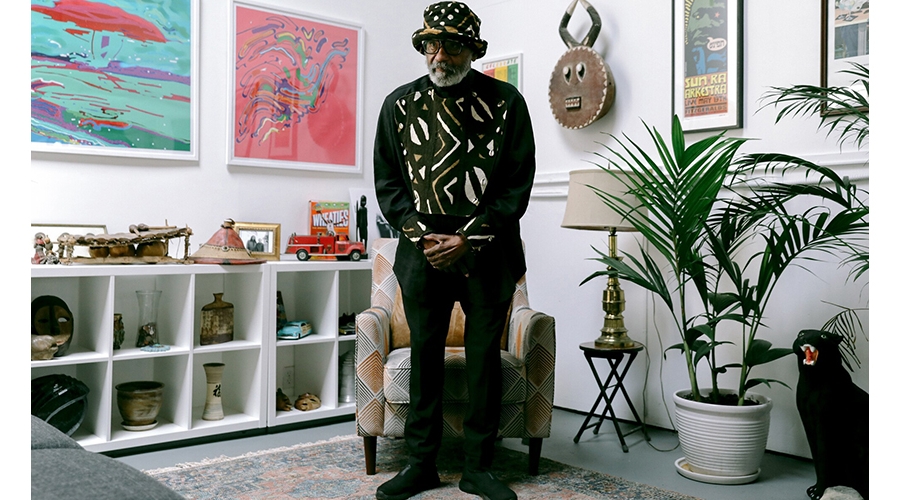
The text below is excerpted from “Art Godfather Ulysses Jenkins Finally Gets His Close-Up with a Hammer Show of His Video Art,” by Carolina A. Miranda, which was published by the Los Angeles Times on March 21, 2022.
In 1981, artist Ulysses Jenkins [’79 MFA Fine Arts] was teaching at UC San Diego when the media faculty was asked to stage a demonstration for an open house. Jenkins says the initial idea was to set up a VCR and play a video. He had other ideas: “I said, we’re supposed to be the media department, let’s do something more advanced.”
His concept: Establish a live video link between two locations on campus—a student lounge and the media studies complex—and use them to create a two-way broadcast between each site. The feed would include student performances as well as a live lecture by media theorist Gene Youngblood (an early proponent of video art), all against a backdrop of found footage and lo-fi ’80s graphics.
Not being in possession of his own personal satellite, this was no easy task. “Everyone who has Zoom can do this today,” says Jenkins. “But this is 1981.”
To achieve a live link, he had to borrow a microwave unit from a local cable company. Then, to get the feed from the student lounge on one end of campus to the communications complex on the other, Jenkins had to place metallic blankets on top of two buildings so that he could bounce the signals back and forth. More than two decades before companies like Skype helped make two-way video calls part of everyday life, Jenkins had improvised his own teleconferencing system and used it to make art.
The resulting work, titled “Televiews and Cable Radio,” was prescient.
Youngblood’s talk, titled “The Electronics Revolution and the Arts,” examined the ways in which greater public access to broadcast platforms might revolutionize communication—a topic that remains resonant in the age of social media. Moreover, Jenkins’ use of a two-way video feed was predictive of the ways in which we now regularly employ technologies such as FaceTime and Zoom.
Beyond that, what makes “Televiews” enjoyable is that it is absorbingly weird.
Youngblood’s silhouette materializes over an array of random images, including Latin American market scenes, a baby absorbing light beams into its open palm and what appears to be a tragic educational video about a pill-popping mom. At times, Youngblood’s words sync uncannily to the images; at others, you’re left scratching your head. Are you looking at scenes from a stage play? Or a Central American uprising? It’s hypnotizing.
“Televiews and Cable Radio” is now on view at the Hammer Museum as part of the artist’s ongoing retrospective, “Ulysses Jenkins: Without Your Interpretation.” The show was organized by Hammer associate curator Erin Christovale and curator Meg Onli, formerly of the ICA Philadelphia, where it went on view late last year. And it illuminates the career of this singular Los Angeles artist.
Jenkins was not only an early adopter of video, he has been a nexus between various ecologies of artists within L.A. and beyond. In collaborative projects that span half a century, he has teamed with conceptualist David Hammons, sculptor and performance artist Maren Hassinger, painter Kerry James Marshall, various members of the art collective Asco, as well as Gary Lloyd, a figure whose preoccupations have included technology and surveillance.
Yet Jenkins’ work, as a body, has been largely unexamined. (Before the Hammer, his only other solo museum show was an abbreviated retrospective at the Crafton Hills College Art Gallery in Yucaipa in 2018.) And it is an extensive body of work—so extensive that trying to see everything at the museum is impossible. (A dozen of his videos are streaming on the Criterion Channel for the duration of the show.) These take the form of straightforward documentaries, as well as hybrid performance-video works that push the boundaries of technology as they deconstruct images and narratives—in particular, those that pertain to race.
You can continue reading the article at the Los Angeles Times. (If you hit a paywall, there’s also a version on Yahoo!)
Main image: photo by Christina House /Los Angeles Times


